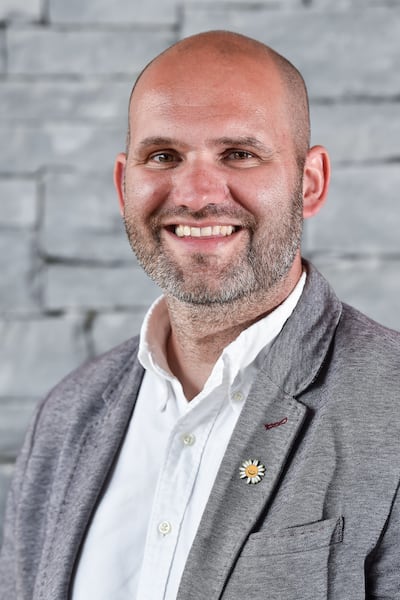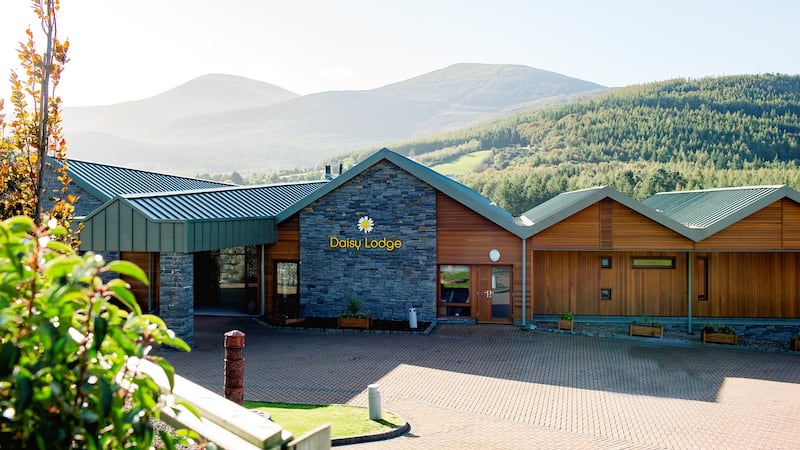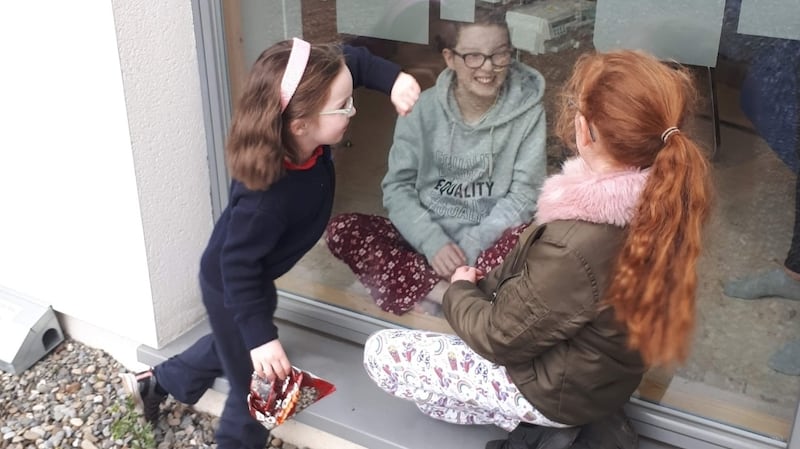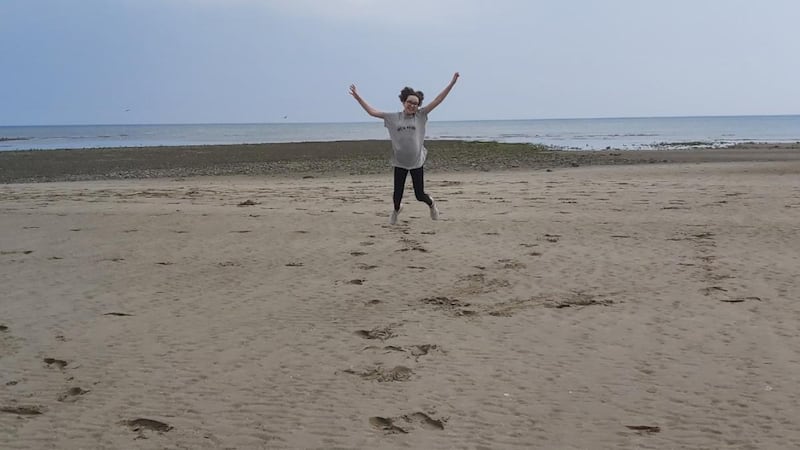Behind each of the 200-plus children and teenagers in the Republic who receive a cancer diagnosis every year stand parents and siblings who have also been engulfed in the emotional, logistical and financial challenges that come with such news.
"It really fractures families," says the chief executive of Cancer Fund for Children, Phil Alexander. When a child is in treatment, usually one parent leaves employment to be at their side and the other parent has to keep working hard, or harder, to pay the bills. Meanwhile, siblings are struggling to get on with everyday living.

“Time and time again,” he says, the Belfast-based charity hears “a very distressing message” from families in the Republic: the medical treatment is fantastic, and clinicians and nurses are amazing, but once they leave the hospital they are on their own.
This is why the Cancer Fund for Children wants to roll out its services across all 32 counties. The first, big step is to build a short-stay family therapeutic centre, for which it already has planning permission, on a 33-acre forested site opposite the gates of Ashford Castle in Cong, Co Mayo, with panoramic views of Lough Corrib.
Called Daisy Lodge, it will be named after and modelled on the one the charity runs in Newcastle, Co Down, where about 60-70 families from the Republic attend each year. But for each one of those families there are another six or seven who can't be accommodated, says Alexander.
Families from the Republic who do get the chance to take short breaks in the safe and caring environment of this Daisy Lodge at the foot of the Mourne Mountains are referred by Children’s Health Ireland (CHI), at Crumlin in Dublin. Most couldn’t go on holiday otherwise, because of the risk of infection in a normal hotel.
“The team in Crumlin are incredibly supportive,” he says. “They recognise that beyond the clinical setting, families become very vulnerable. Emotionally coping with a child’s cancer diagnosis is very challenging and, at times, devastating for the whole family.
“Our whole focus is how to empower and equip families to cope better along the way.”

Within the next four years, they not only want to build the Mayo Daisy Lodge but also provide cancer support specialists to every family on the island that is dealing with such a diagnosis, as is already done in the North. These specialists go into families’ homes, to work with the sick child, and/or siblings and parents, to help them cope with the challenges that come with a cancer diagnosis.
But why would a Northern Irish charity expand into the South?
We believe we have a model of support that could be cascaded across Ireland very easily on a national basis
“That’s the big question, which we get asked all the time,” he replies. The answer is, he says, that “sadly there are no services for these families”. Or what little there is is very fragmented.
“We believe we have a model of support that could be cascaded across Ireland very easily on a national basis, ensuring that the right people are with these families on their journey at the right time,” says Alexander.
Plans for a second Daisy Lodge are welcomed by Mary Claire Rennick, founder of the Childhood Cancer Foundation. "We're all for co-operation and collaboration," she says. While childhood cancer is "a relatively small community", there are "huge needs to be addressed".
The foundation is joining two other voluntary, advocacy groups in the Republic, Cancare4living, which works with survivors of childhood/teen cancer, and CanTeen Ireland, a support group for those aged 12-25 who have or have had cancer, in hosting an inaugural Children, Adolescent, Young Adult and Survivors Conference next September.
Anya’s story
The Dowdall-Heffernan family from Killucan in Co Westmeath is one of those who has had the benefit of a restorative break at Daisy Lodge in Co Down. The planned trip was postponed a couple of times, due to illness and then pandemic restrictions, before they finally got there last August. But, says Marissa Heffernan, a mother of three girls, “it was worth the wait”.
For the first time since her eldest daughter, Anya Dowdall, had been diagnosed two years earlier, at the age of 13, with acute myeloid leukaemia, the family was able to relax together. Although there are optional activities, with an emphasis on self-care, Marissa, her husband, Thomas Dowdall, and their daughters Anya, Sarah (12) and Louise (seven), enjoyed invaluable family time over the three-night stay.
“It was the first time we were out together as a family, which wasn’t anything to do with Crumlin [children’s hospital] or anything like that. It sort of grounded us again,” says Marissa. She and Thomas had been “a tag team” for two years before that, juggling his work, care of the two younger children and being with Anya in and out of hospital.
“Thomas was out playing football with the girls; I couldn’t remember when he had last done that, which was lovely.” Anya’s granny made it to Daisy Lodge too.
“It had been a long two years for Nanny as well; she was the third parent,” says Marissa. Within what is a large extended family, aunties and uncles also helped out greatly, “but I couldn’t bring them all with me,” she laughs.

While they ended up going to Daisy Lodge after Anya’s treatment had finished, she sees how it would be very beneficial to chill out and regroup there in the middle of treatment. Nobody bats an eyelid at a child with no hair, whereas she remembers when Anya was at that stage and they brought her out, “kids were staring, adults were staring”.
Marissa also recalls the calmness and beauty of the setting, close to the beach as well as the mountains. “There was no rush.”
In contrast, it had been “a whirlwind” after Anya was diagnosed in October 2018, having been troubled with headaches for weeks. Her parents thought these stemmed from the child hurting her neck while out doing handstands and headstands with her cousins more than a month before. Cancer never occurred to them.
“It was a big bang,” says Marissa. “With your firstborn you think everything is going to kill them. But you do get past that stage.” While they knew Anya wasn’t well, they weren’t unduly worried. “We’re back at that stage now.”
Having not long started a new job, after taking time out of the workforce to stay at home and to retrain in early childhood education, Marissa admits she was bit annoyed at having to go in and out with Anya to the doctor’s, being told it was probably hormones, premenstrual tension; or was she stressed? Was she being bullied in school?
“This is what they were putting it down to. I completely understand now it was hard to pick up,” she says.
It was a blood test taken after an out-of-hours doctor consultation late on a Thursday that rang alarm bells and, the following day, it was confirmed in Crumlin that Anya had leukaemia. The teenager handled it well.
“She based herself on me, how calm I was,” says Marissa, whose composure was down to advice from nurses in Crumlin that, at the time, she thought was harsh but, in hindsight, she regards as the best she got.
“Now you can have a cry, you can get angry and do whatever you want,” is how she paraphrases what they told her. “But once you leave this office, you have to cut that out; you have to cop on and you have to be strong and you have to just get on with it. Nobody else is going to do it for you.”
“I went into Anya like that and told her she was going to be fine. I think she did feel comfortable and quite confident that I was going to look after her and protect her.”
The consultant asked Marissa whether, if her daughter asked him a question, he could he be honest with her. 'I said yes – unless she's going to die. That's the only thing you can't tell her'
The consultant asked Marissa beforehand that if her daughter asked him a question, could he be honest with her. “I said ‘yes, unless she’s going to die, that’s the only thing you can’t tell her’.” So he told Anya to ask whatever questions she wanted, which she did.
“We were always honest with her and it never came to that question, so everything was fine.”
After finishing three rounds of chemotherapy by January 2019, Anya needed a bone marrow transplant. Her parents hoped their youngest daughter might be a suitable donor and had her tested first because their middle child, Sarah, suffers from “white coat syndrome” and they knew it would be a big ordeal for her.
However it was Sarah who proved to be a 100 per cent match. How do you tell a frightened 10-year-old that you want her to donate bone marrow to her big sister?
“We gave her the choice and she wanted to do it,” says Marissa. “But as the time came, she started to say ‘I want to help Anya but I don’t want to do it’. To be honest, we didn’t know what to do.”

The consultant suggested that a psychologist talk to the girl and if it was believed she really couldn’t do it, she wouldn’t, but that she was Anya’s best chance. After a consultation, the psychologist was satisfied Sarah did really want to do it. “She badly wanted to do it, so I think that’s how she managed it,” says Marissa.
On the day of the transplant, April 8th, 2019, it was only Sarah’s procedure that had to be done under general anaesthetic. It was a nervous wait for Marissa after “sending a healthy child up to theatre”, especially when what she was told would take one hour took two hours.
However all was well and two to three hours later medical staff had Sarah’s blood ready in a bag. It was hooked up to Anya and Sarah was able to sit the other side of a glass wall and watch her bone marrow go into her sister.
Anya was home on May 10th, but recovery was slow. She couldn’t go back to school until she got all her childhood vaccines redone, “everything was wiped”. Even now, says Marissa, Anya’s immune system isn’t great “but, touch wood, she hasn’t been sick”.
For her, the pandemic may have been a blessing, with people around her wearing masks and social distancing. She returned to school last September. “She’s very healthy now; a few aches and pains but I think she might have had them anyway,” says Marissa. “She’s doing really well; no after-effects so far.”
The one concern Marissa had about staying in the North, certainly when they were due to go to Daisy Lodge during Anya’s treatment, was that they would be outside the Health Service Executive jurisdiction if she needed medical treatment. “I was looking up on Google maps how far it was from Crumlin and how far it was from Mullingar,” she says.
Although Daisy Lodge is not a clinical setting, it does have support from district nursing teams, Alexander explains, and they also work closely with Crumlin and Royal Belfast hospitals. There is an arrangement that if a child from the Republic needs medical attention while at the centre, they can go to the Royal, which is just 45 minutes away.
Alexander, who used to manage Daisy Lodge, would see a physical change in families attending. On a Thursday or Friday families would come in “exhausted and actually not knowing if they wanted to be there, they were so exhausted. By Monday or Tuesday, their posture had changed; there was a smile on their face and there was laughter.”
One parent said to him it was the first time since the child’s diagnosis that they felt they were allowed to be joyful as a family.
Fundraising for the estimated €12.5 million required to build the Daisy Lodge in Co Mayo has been delayed by the pandemic and is only starting in earnest now. The charity is seeking funding from Government, corporate donors, the diaspora and from people across Ireland and hopes to have the new centre open by September 2024.
“There is an urgency about this because children with cancer don’t have time to wait,” Alexander adds. With the planning permission secured, “if somebody gave us the money, we could go tomorrow”.
All-Ireland children’s health services
There is already an all-Ireland service for children’s cardiology and a similar approach to children with cancer would be welcomed by the Belfast-based Cancer Fund for Children.
“We know outcomes would be better served,” says Phil Alexander, chief executive of the charity which provides psycho-social support for families and plans to expand its services into the South. Among the children it works with in the North are those who have to travel to Bristol for treatment for leukaemia, when they could be travelling to Dublin, he points out.
Since 2014, Children’s Health Ireland (CHI) at Crumlin provides all emergency and urgent cardiothoracic surgery and interventional cardiology for children in Northern Ireland, confirms the HSE in response to questions from The Irish Times.
“While provision of health and social care services is the remit of each individual jurisdiction, there are many instances where North-South, east-west or all-island health service collaboration makes sense, with the goal of improving the health and wellbeing of the HSE patients and clients.”
Much of the North-South activity has focused on the Border region, where people living both sides share specific problems, such as poor infrastructure and relatively long distances from major urban centres, it points out.
In addition to children’s cardiology, other examples of North-South health co-operation include:
– Milk donated to the Human Donor Breast Milk Bank in Enniskillen, Co Fermanagh, by mothers throughout the 32 counties. It is then processed there to be used for premature and vulnerable babies in all of the island’s neonatal units.
– More than 600 patients from the Republic receiving radiotherapy treatment at the Cancer Centre in Derry’s Altnagelvin Area Hospital, which opened in November 2016. The Government provided capital funding and ongoing revenue so that cancer patients from Co Donegal could use this facility.
– About 70 cardiac patients a year from Co Donegal receiving life-saving treatment at Altnagelvin hospital under a cross-Border agreement between the Western Health & Social Care Trust (WHSCT) and Saolta University Health Care Group (Saolta). This 24/7 service benefits patients who become ill with a suspected heart attack and need procedures such as angiograms or stents inserted.
– Health funding as an element of the new €1 billion Peace Plus programme (2021-2027), with the HSE engaged with Northern Ireland colleagues in advancing various projects to secure funding, in order to improve the health and wellbeing of the Border population and beyond.





















